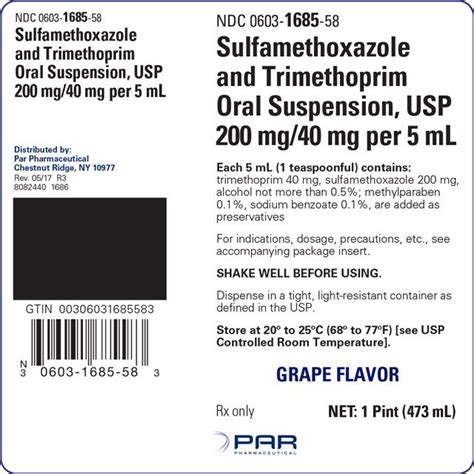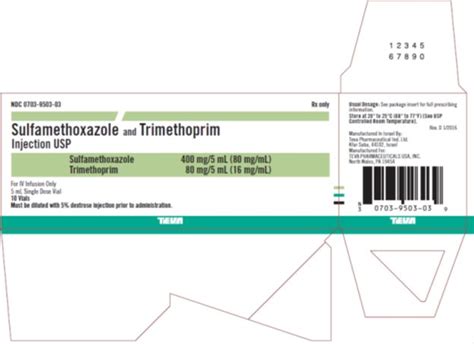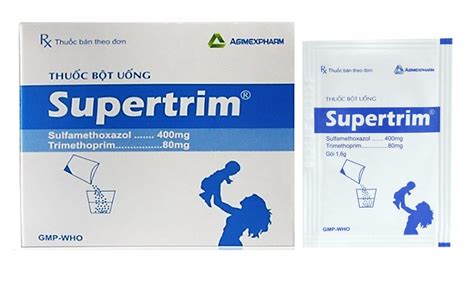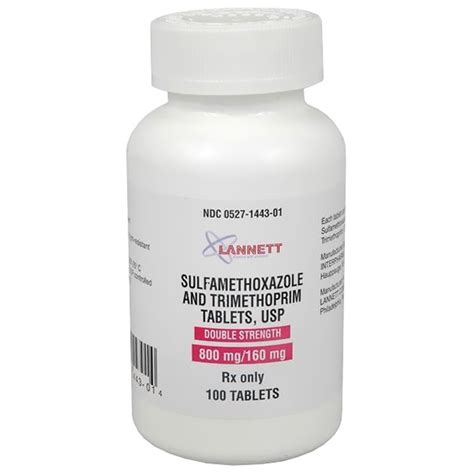Intro
Discover 5 essential tips for using Sulfameth Trimethoprim, an antibiotic for bacterial infections, including dosage, side effects, and interactions, to ensure safe and effective treatment with this sulfonamide combination.
The use of antibiotics has become a common practice in treating various bacterial infections. Among the numerous antibiotics available, Sulfamethoxazole and Trimethoprim, commonly referred to as Sulfameth Trimethoprim, stand out for their effectiveness against a wide range of bacterial infections. This combination of sulfonamide and trimethoprim works by inhibiting the growth and multiplication of bacteria, thereby treating the infection. Understanding how to use Sulfameth Trimethoprim effectively is crucial for maximizing its benefits while minimizing potential side effects.
Sulfameth Trimethoprim is prescribed for various bacterial infections, including urinary tract infections, bronchitis, traveler's diarrhea, and pneumonia, among others. Its broad-spectrum activity makes it a preferred choice for treating infections where the causative agent is unknown. However, like all medications, it must be used judiciously, considering factors such as the severity of the infection, patient's health status, and potential for drug interactions.
Given the importance of using Sulfameth Trimethoprim responsibly and effectively, it's essential to delve into the specifics of its use, benefits, and considerations. This includes understanding the proper dosage, potential side effects, and the importance of completing the full treatment course as prescribed by a healthcare provider.
Introduction to Sulfameth Trimethoprim

Benefits of Sulfameth Trimethoprim
The combination of Sulfamethoxazole and Trimethoprim offers several benefits, including: - **Broad-spectrum activity**: Effective against a wide range of gram-positive and gram-negative bacteria. - **Synergistic effect**: The combination enhances the antibacterial effect, allowing for lower doses and potentially fewer side effects. - **Oral administration**: Convenient for outpatient treatment, reducing the need for hospitalization. - **Cost-effective**: Compared to some newer antibiotics, Sulfameth Trimethoprim can be more affordable, making it a valuable option in various healthcare settings.How Sulfameth Trimethoprim Works

Common Uses of Sulfameth Trimethoprim
Sulfameth Trimethoprim is commonly prescribed for: - Urinary tract infections (UTIs) - Acute bronchitis - Traveler's diarrhea - Pneumonia - Skin and soft tissue infectionsPrecautions and Side Effects

It's crucial to discuss any pre-existing conditions, allergies, or medications with a healthcare provider before starting Sulfameth Trimethoprim. This includes informing them about any history of kidney or liver disease, as Sulfameth Trimethoprim is primarily excreted through the kidneys and its use may need to be adjusted in patients with renal impairment.
Interactions with Other Medications
Sulfameth Trimethoprim can interact with various medications, including: - Blood thinners (e.g., warfarin) - Methotrexate - Phenytoin - Sulfinpyrazone - HydantoinsThese interactions can either increase the risk of side effects or reduce the effectiveness of Sulfameth Trimethoprim. Therefore, a comprehensive review of all medications, including over-the-counter drugs and supplements, is essential before initiating treatment.
5 Tips for Using Sulfameth Trimethoprim Effectively

Importance of Responsible Use
The responsible use of antibiotics like Sulfameth Trimethoprim is crucial to combat the growing problem of antibiotic resistance. This involves using antibiotics only when necessary, as prescribed by a healthcare provider, and completing the full treatment course. Misuse or overuse of antibiotics can lead to the development of resistant bacteria, making infections harder to treat.Conclusion and Future Perspectives

What is Sulfameth Trimethoprim used for?
+Sulfameth Trimethoprim is used to treat various bacterial infections, including urinary tract infections, bronchitis, and pneumonia.
How does Sulfameth Trimethoprim work?
+Sulfameth Trimethoprim works by inhibiting the growth and multiplication of bacteria, through the synergistic action of sulfamethoxazole and trimethoprim.
What are the common side effects of Sulfameth Trimethoprim?
+Common side effects include nausea, vomiting, diarrhea, and rash. More severe but less common side effects can include agranulocytosis and thrombocytopenia.
We invite readers to share their experiences or ask questions about using Sulfameth Trimethoprim in the comments section below. Your input can help others understand the importance of responsible antibiotic use and the effective management of bacterial infections.
